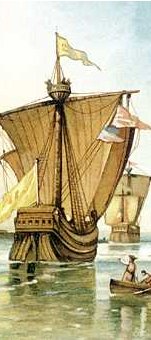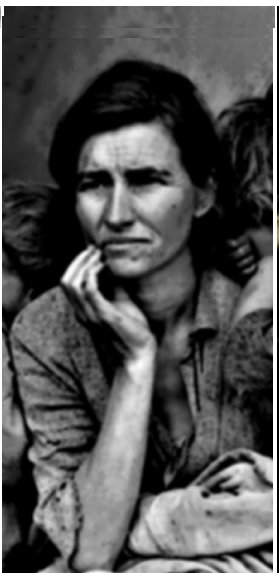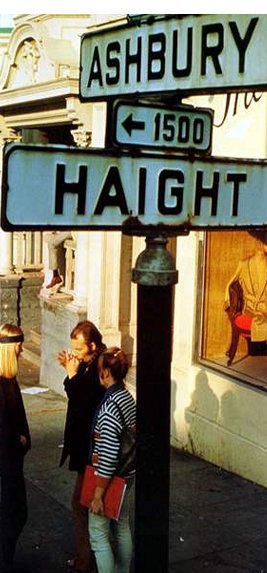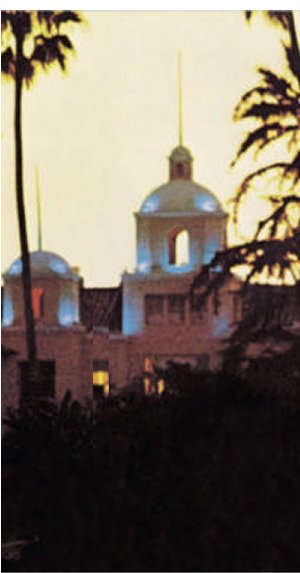Upton Sinclair¡¦s California Carin Montelongo
Professor Lauren Coodley grew up in Los
Angeles County,
where she was influenced by her grandparents, whom resided in California
during Sinclair¡¦s arrival. Currently, she is a distinguished teacher at Napa
Community College, where she
dedicates herself to particular areas of California
history. She is also well-known in Napa
for her 2004 book Napa: the Transformation of an American Town,
in which she thoroughly documents the history of small towns around the country.
Upon visiting the Los Angeles
harbor workers¡¦ community center, visitors can see a stone monument engraved
with the story of the 1923 labor strike at Liberty Hill, in which members of
the Industrial Workers of the World (IWW) struck against low wages, poor work
conditions, and the imprisonment of unionists under California¡¦s criminal
syndicalism law, which prohibited the use of violent or illegal acts to invoke
political change.1It was during this infamous strike that Upton
Sinclair, an author revered around the world for his political views and
firebrand ideology, first made his political mark upon California, as he was
jailed for reading the Bill of Rights to a crowd of striking laborers. In her
book The Land of Orange Groves and Jails: Upton Sinclair¡¦s California,
Lauren Coodley, a California
history professor at Napa Community
College, divides Sinclair¡¦s fifty years in California
into four sections: his early political awakenings, his devotion to activism,
his battles with Hollywood, and his
attempt at governorship. In doing
so, she acknowledges readers¡¦ tendency to associate Sinclair¡¦s name solely with
his 1906 book The Jungle, which revealed contaminations within Chicago¡¦s
meat-packing industry, yet effectively redirects them to his accomplishments in
the Golden State
during his time as a California
resident.
In order to give readers a sense of
understanding and perspective, Coodley begins by introducing Sinclair¡¦s life
prior to California in the first
section of her book, titled ¡§Political Awakenings.¡¨ 2 In this introduction, Coodley
discusses Sinclair¡¦s early life and works while highlighting some of his key
accomplishments. Naturally, she first explains his upbringing as a child, as he
was greatly influenced by his surroundings. The son of an alcoholic, Sinclair
realized the dangers of alcohol at an early age and continually spoke out
against its consumption throughout his life, stating, ¡§I cast my vote against
social drinking¡¨. 3 Having had attended temperance marches with
his mother, Sinclair was quick to take up drinking as a political issue and
later concluded that sobriety would result in additional time for activism.
Also influential were Sinclair¡¦s living situations throughout his upbringing.
As a child and again in his teens, Sinclair traveled back and forth between
poverty-stricken boarding houses and the luxurious households of close
relatives. Naturally, the inconsistencies in his surroundings, mainly the
differences between rich and poor, left lasting impressions on Sinclair, as he was
significantly conflicted by them. Then, in search of an answer to the
contradictions in his life, Sinclair embarked upon a journey in which he
explored religion and poetry, only to stumble upon socialism, which became his
life-long outlet.
Coodley continues in the second
section of her book by describing Sinclair¡¦s arrival in California
and his influence as a prominent socialist figure. Initially, upon arriving in Carmel
in 1908, Sinclair intended on visiting Gaylord Wilshire, a poet friend of his. 4
However, after his experiences in Carmel,
Sinclair later decided with his wife Mary Craig to move to California.
Thus, in 1915, he and his wife relocated to Pasadena,
California, where they remained for the
next forty years. Already an
established ¡§muckraker,¡¨ Sinclair continued to voice the corruptions he came to
witness within capitalism, particularly those involving the press and big
business. 5 In the beginning, Sinclair satisfied his activist craves
by publishing articles condemning The Los Angeles Times for printing
fallacies. The result of this was a habitual battle between him and the
newspaper. In addition, Sinclair voiced his concern about the insufficient and
unsatisfactory education system in California
and criticized the government¡¦s treatment of teachers, who were often subject
to accusations of communism. Next, Sinclair condemned the oil industry for
stock scandals which benefited stockbrokers at the expense of thousands of
Californians, who were left empty-handed. In this section, however, Coodley
emphasizes two particular events which she believes have been forgotten by most
historians: the Wobblies¡¦ strike in San Pedro at Liberty Hill and the Yucaipa
camp incident in San Bernardino County.
In the midst of a national anti- socialist movement headed by Attorney General
A. Mitchell Palmer, union members of the IWW, better known as the Wobblies,
called for a strike in which they docked ninety ships in the San Pedro harbor. 6 After
being jailed for his involvement in the strike, Sinclair was enraged by the
unconstitutional treatment Wobblies received while in prison, and was inspired
to write a successful play, titled Singing Jailbirds, in which he
depicted their unbearable conditions. Unsurprisingly, Singing Jailbirds
became widely popular, and was performed not only in New
York, but also in Berlin.
Similarly, Sinclair was moved to action after hearing the verdict of the
defendants of the Yucaipa camp case, in which five Russian Jewish girls were
charged for ¡§conspiracy to display a red flag¡Kin opposition to organized
government¡¨ for running a children¡¦s communists camp in Yucaipa. 7 Sinclair
opposed the court¡¦s ruling and fought against it, questioning what dangers the
red flag actually posed while suggesting that it simply resembled an idea, and
that imprisonment for an idea was unjust. Though Sinclair received support from
fellow activists in regards to the incident, there was little that could be
done, and the court¡¦s ruling remained the same.
Moving on from Sinclair¡¦s activism,
Coodley presents in the third section of her work his ongoing struggles with Hollywood.
In this chapter, Coodley discusses a cycle that delineated Sinclair¡¦s constant
battle with the Hollywood industry. First, Sinclair
wrote a novel or play, which exposed a truth. Then, his work became
overwhelmingly popular or discussed. After that, an attempt was made to produce
a film based on the work. Finally, the film was rejected by studios whose
business backers didn¡¦t agree with either the message of the film or Sinclair¡¦s
political stance. This was especially true when Sinclair¡¦s was asked to write a
screenplay contrasting the lives¡¦ of the rich and the poor, which he titled Star
Spangled Banner, was rejected by studios. Upon refusal, Sinclair commented
that his screenplays were rejected because they ¡§indicted the profit system.¡¨ 8 However,
Coodley mentions Sinclair¡¦s achievements within the film industry as well, such
as his 1931 novel The Wet Parade, which became a highly successful film
in 1932. Revolving around Sinclair¡¦s temperance beliefs, the film fought to
encourage prohibition in a time when repeal of the prohibition amendment was a
popular idea. Also successful was Sinclair¡¦s deal with Walt Disney, in 1936,
after he published a popular children¡¦s book titled the Gnomobile.
During their first meeting, Walt Disney initially refused to make Sinclair¡¦s
book into a movie, but later promised Sinclair that if he ever switched to
using live characters, he would produce a film of the Gnomobile, and in
1965 Disney kept his promise. 9 The
movie was a success, and Sinclair was proud to have witnessed such an
accomplishment before his death in 1968.
In her final chapter, Coodley
recounts Sinclair¡¦s influential 1934 campaign for California
governor and that though in vain, his campaign had lasting effects. During the
Great Depression, hundreds of California
businesses collapsed, ¡§revealing a sad picture of fraud, embezzlement and other
forms of financial chicanery.¡¨10 Sinclair, aware of California¡¦s
fragile state, was easily convinced by a close friend to temporarily drop his
socialist status and run as a Democrat ¡Xthey believed he would have a better
chance of winning if he ran as a Democrat¡X for governorship versus the popular
Republican candidate, Frank Merriam. With California¡¦s
unemployment and poverty levels continually rising, Sinclair had a plan to ¡§End
Poverty in California (EPIC),¡¨ and in his campaign he advocated a credit system
which would require the use of ¡§consumption to balance production.¡¨ 11 Sinclair¡¦s
campaign was geared toward the common people and his EPIC pamphlets often
contained messages that pertained to all working-class Californians, regardless
of occupation. Consequently, Sinclair received a large amount of public
support. Coodley further explains how Sinclair¡¦s opponent Merriam retaliated
through the exploitation of close ties with elites in the business world. In
such cases, MGM CEO Irving Thalberg fabricated newsreels portraying Sinclair as
a cruel and untrustworthy candidate, while press, such as The Los Angeles
Times and The San Francisco Chronicle, further diminished Sinclair¡¦s
image with baseless libel. In addition, other Republican businessmen acted in a
variety of ways to ensure that their employees would not vote for Sinclair in
the upcoming election; some required Merriam stickers or buttons to be worn by
all employees if they intended on keeping their jobs, other employers went so
far as to require their workers to sign a contract in which they promised not
to vote for Sinclair. 12 Regardless of his popular support from the
people, in the end, Sinclair proved too weak to overcome the political
corruptions within big business. However, his EPIC campaign still had a
profound impact on the state. More than forty EPIC-supported candidates were
elected to state legislature, guaranteeing the Democratic Party the title of
the ¡§Progressive force in California.¡¨
13
Professor
Coodley presents a clear and direct thesis, in which she affirms that by the
time Sinclair arrived in
California, he had already ¡§fully¡¨ embraced himself after his time on the East
coast and was then able to ¡§fully¡¨ engage himself in California, a state
¡§ranged so eclectically from orange groves to jails.¡¨ 14 She also
comments briefly on Sinclair¡¦s accomplishments in the state, ranging from his
articles and books on the importance of sobriety and health to his defense of
the laborers and working class citizens against corrupt capitalists. Coodley
then divides Sinclair¡¦s life in California
into four key sections to provide her readers with a sense of structure. While
further dividing her evidence into subsections, she also provides insightful
quotes derived from Sinclair¡¦s previous works. As is clear from her thesis and
structure, Coodley¡¦s purpose is to inform, and she does an adequate job at that.
Nevertheless, more biographical information would have made the text more
enjoyable.
Without
a doubt, Professor Coodley, a California
resident whose grandparents lived in L.A.
during Sinclair¡¦s period of activism, saw the remnants of Sinclair¡¦s influence
during her life. However, it was not until 1995 when she showed a film about
the EPIC movement to her students that she realized the significance of
Sinclair¡¦s lost Californian history. 15 As a California
labor and women¡¦s history teacher, Coodley was inspired by Sinclair¡¦s feminist
ideals and appeal to California¡¦s
laboring class, thus she emphasizes solely Sinclair¡¦s positive traits, with few
¡X if any ¡X references to his negatives aspects. After her numerous proposals
for a biographical film based on Sinclair remained unanswered, Coodley
organized a meeting with ¡§Sinclair scholars,¡¨ all of whom provided facts and
information in Sinclair¡¦s defense, at the University of Los Angeles,
California, where she received much of the information for her book. As a
result, her work presents Sinclair exclusively in a heroic light and portrays
him as a victim of the corruptions of capitalism.16
Coodley
received positive reviews of her book, most of which praised her for bringing
Sinclair¡¦s life and accomplishments back into the public eye. Ironically,
however, one of these upbeat articles came from the San Francisco Chronicle,
which Coodley condemned in her work for having strongly opposed Sinclair¡¦s EPIC
campaign. In her review of Coodley¡¦s work, San Francisco Chronicle
writer Annie Nakao refers to Sinclair as a ¡§brilliantly engaged citizen of
California¡¨ and avoids mention of Coodley¡¦s critique of the paper, all while
maintaining a positive attitude toward both Coodley and her book.17 Similarly,
Paul Atwood of the California History Action paper champions Coodley¡¦s
work, commending her for reminding society that Sinclair ¡§was necessary¡Kas an
activist¡Kto promote public interest.¡¨ 18
In accordance with these reviews,
Coodley¡¦s overall message is adequately conveyed, and allows for an
entertaining and informative reading experience. By strictly following a clear
and concise structure throughout her book, Coodley provides for an easily
comprehendible read while simultaneously causing a peaked interest in
Californian history for her readers. However, Coodley often presents facts
without elaborating upon them, as seen in chapter one when she describes
Sinclair¡¦s early life. Coodley comments that ¡§due to his father¡¦s alcoholism,
Sinclair was raised in a series of dreary boarding houses,¡¨ yet she fails to mention his mother¡¦s
living situation and only later mentions Sinclair¡¦s relationship with his
mother vaguely as it pertained to his involvement in the temperance movement. 19 Consequently,
readers are often left hanging. In addition, Coodley only vaguely mentions
background information about Sinclair, and focuses mainly on his
accomplishments, which is acceptable; however, an increased attention to
background information and detail would have made the book much more pleasing.
Still, Coodley¡¦s work reveals more
than just Sinclair¡¦s accomplishments; it also presents Eastern influences on California
during Sinclair¡¦s forty years as a resident. Most obviously, Coodley connects
Sinclair¡¦s muckraking career in Chicago
to his continued activism in California.
In doing so, she suggests that even though Sinclair had begun his career as an
activist in Chicago, his most
commendable acts of exposure occurred in California.
Then, she focuses primarily on the effects of the nation¡¦s economic problems,
largely associated with Wall Street¡¦s stock market crash, declaring that ¡§California
was not shielded from the economic disaster that created the Great Depression.¡¨
20 In her book, Coodley points out that California¡¦s
primary products, including ¡§specialty crops, movies, and tourism,¡¨ made it
especially susceptible to financial ruin. Due to this vulnerability, California
businesses also became overwhelmingly prone to corruption and scandal, as
Coodley briefly discusses toward the end of her book.
At the same time, Coodley presents
information as to how California
remained unique from other states during this national disaster. In her work,
Coodley primarily credits Sinclair¡¦s EPIC campaign for California¡¦s
distinctiveness during the Great Depression; his campaign was the only one to
suggest that the state take full control of all businesses, enact a system of
credit, issue bonds, and slowly provide for the state¡¦s gradual recovery before
eventually reinstating California¡¦s system of privately owned businesses.
Sinclair received public support for this plan when he advocated it as a system
in which ¡§Democracy applied to industry.¡¨ 21 While providing for a
distinct message and approach, Sinclair¡¦s campaign was also significant in the
way in which it appealed to the people. In reference to Sinclair¡¦s EPIC
Answers, which were pamplets he issued to answer common questions about his
EPIC plan, Coodley mentions that regardless of status or job description,
almost every Californian could deeply relate to Sinclair¡¦s campaign. As is
evident in her approach to this book, Coodley undoubtedly feels that Sinclair¡¦s
unconventional campaign paved the way for California¡¦s
uniqueness.
Lastly, Professor Lauren Coodley¡¦s book The
Land of Orange Groves and Jails: Upton Sinclair¡¦s California dissociates
Upton Sinclair from The Jungle and refocuses readers on his
accomplishments in California during the midst of a national crisis,
specifically during an era of anticommunism and the Great Depression. As a
socialist, Sinclair rallied for the rights of immigrants and working-class
Californians, while battling Hollywood and big business, and spreading his fight
for an ¡§End to Poverty in California.¡¨ 22 Through excerpts from some
of Sinclair¡¦s most popular pieces of work, Coodley effectively draws readers
into Californian life during Sinclair¡¦s presence in the ¡§Orange Belt,¡¨ and
provides readers with a much needed insight into Sinclair¡¦s mind.23
Though more background information would satisfy readers¡¦ curiosities, Coodley
successfully and clearly explains the long-lasting effects Sinclair has made on
California, not only in the business world, but also in the lives of hundreds
of thousands of hardworking Californians.
1. Coodley, Lauren. The Land of Orange Groves and Jails:
Upton Sinclair¡¦s California. Berkeley:
Heyday Books, 2004. 38
2. Coodley, Lauren.
1
3. Sinclair, Upton.
The Cup of Fury. New York:
Channel Press, 1956.
4. Coodley, Lauren.
26
5. Sinclair, Upton.
American Outpost. New York:
Farrar and Rinehart Inc., 1932.
6. Coodley, Lauren. 38
7. Coodley, Lauren. 88
8. Coodley, Lauren. 107
9. Coodley, Lauren. 109
10. Rice, Richard; Bullough, William; Orsi, Richard. The
Elusive Eden. New
York: McGraw Hill, 2002.
11. Coodley, Lauren. 182
12. Hoyt, Frank. ¡§The Magic Sinclair Button.¡¨ Upton Sinclair
Quarterly 2 (1981): 3-5
13. Gottesman, Ron. Interview with Upton Sinclair. Columbia
Oral History Project, 61.
14. Coodley, Lauren. Introduction. The Land of Orange Groves
and Jails: Upton Sinclair¡¦s California.
By Coodley. Berkeley: Heyday Books,
2004. XII-XIII.
15. Coodley, Lauren. Acknowledgements. The Land of Orange
Groves and Jails: Upton Sinclair¡¦s California.
By Coodley. Berkeley: Heyday Books,
2004. VII.
16. Coodley, Lauren. Acknowledgements. The Land of Orange
Groves and Jails: Upton Sinclair¡¦s California.
By Coodley. Berkeley: Heyday Books,
2004. VII.
17. Nakao, Annie. ¡§Upton Sinclair made his mark as a
muckraker. His vision for California
now takes the spotlight.¡¨ SFGate.com. 12
Jan. 2005. 29 May 2008. <http://www.sfgate.com/cgi-bin/article.cgi?f=/c/a/2005/01/12/DDGB9AOANQ1.DTL>.
18. Atwood, Paul. ¡§Reviews: The Land of Orange Groves and
Jails: Upton Sinclair¡¦s California.¡¨
California History Action. Vol.
23 (2005):14. 2005. 29 May 2008.
<http://csus.edu/org/ccph/ CaliforniHistoryAction/2005/CHASummer2005.pdf>.
19. Coodley, Lauren. 7
20. Coodley, Lauren. 174
21. Coodley, Lauren 178
22. Coodley, Lauren. 174
23. Coodley, Lauren. 84





















